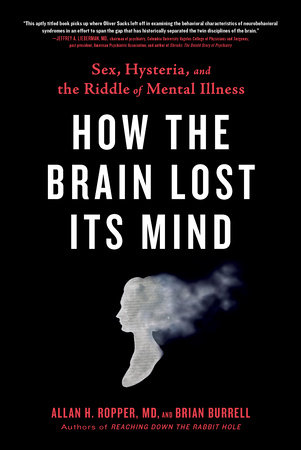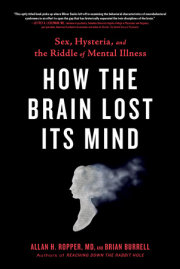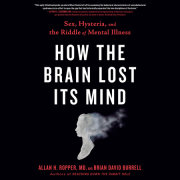Chapter 1
A Clinical Lesson
On a warm Paris afternoon in late spring, throngs of weary tourists swarm the narrow streets off the Boulevard Saint-Michel in search of a place to unwind after a day spent in the grueling pursuit of checklist tourism. Led around by docents and modern-day Baedekers, most of these vacationers have dashed through a handful of the city's five-star attractions, waved selfie sticks while plugged into audio tours, and can now be seen flowing into the Place Saint-Michel in a movable feast fanning out across the sidewalks and down the clogged alleyways feeding into the Rue de la Huchette.
Just around the corner from this bustling warren of conviviality, one of the most historically significant artworks in the city goes unnoticed, unvisited, and unappreciated. Sheltered in a vestibule of a stately neoclassical building, it presides over an oasis of solitude and calm. Because none of the guidebooks mention it, very few people are even aware it exists. It is a large painting, and over the century and a quarter since it was painted, it has lost its notoriety but not its significance. To understand this one painting is to understand everything that went wrong in the modern concept of mind and brain. It portrays nothing less than the original sin of neurology and psychiatry, one from which we are still trying to recover.
The colonnaded building housing the painting is perched on the Rue de l'ecole-de-Medecine, a two-minute walk from the bustle of the Place Saint-Michel. It is the home of Paris Descartes University, a satellite of the Sorbonne. Among other things it contains a museum of medical history: a cabinet of gruesome curiosities including an amputation kit used at the Battle of Waterloo, crude-looking instruments once used to remove bladder stones, and boxes of glass eyes. Admission costs three euros, but the painting can be viewed for free. At nine and a half by fourteen feet, it is too big for the museum's limited wall space and has been accommodated just outside of the main gallery, as if in an afterthought, in a skylighted foyer where, on a sunny day, the glare makes it difficult to take in as a whole. As a further indignity, it is unframed and almost casually hung, a sad fate for a work once hailed as "the success of the Salon of 1887."
The painting is by Andre Brouillet, a journeyman artist who studied with the great Jean-Leon Gerome, had a moment of passing fame, and then slid back into obscurity. He titled the work Une Leon Clinique a la Salpetriere (A Clinical Lesson at the Salpetriere Hospital), and at the Salon des Beaux Arts of 1887, an annual showcase of established and aspiring academically trained artists, it stood out by virtue of its striking subject. Rather than drawing upon the distant past, Brouillet chose to depict a contemporary event, one very much of the moment. The setting is a window-lit room in a hospital. A medical demonstration is in progress before a male audience. At first glance, it appears to be a group portrait of thirty finely rendered individuals. The center of attention is a young woman in a state of semiconsciousness and semi-undress. The scene is highly sexualized and frankly voyeuristic, hardly unusual in the world of academic painting. Two of its more obvious points of reference include a scandalous canvas by Gerome entitled The Slave Market in Rome, featuring a nude young woman standing on an auction block as buyers frantically make their bids. The other, a more subdued work, depicts Philippe Pinel, the aforementioned pioneer in the humane treatment of the insane, as he orders the unshackling of the madwomen at an asylum. Stripped of all context, the subjects of these works are young, vulnerable, exposed, unseeing or semiconscious women under the complete control and watchful eyes of men. In each case the historical moment trumps the sensational content, allowing the paintings to be peddled as art rather than as pornography.
A salon-goer of 1887, unlike the viewer of today, would have known exactly what was going on in Brouillet's canvas. A young woman under hypnosis will be induced to act out a series of seemingly unexplainable physical and mental tasks, during which needles will be passed through her hand with no sensation of pain, paralyses will appear on one side of her body, only to switch sides after the application of a magnet, and her perception, having become sensitized, will allow her to read thoughts and exhibit astounding feats of clairvoyance. Finally, as the piece de resistance, she will respond to a series of random suggestions from her handlers, ranging from the banal-"You are smelling a flower," "You see a snake"-to the fantastic-"You have survived a violent train crash," "You are Kutuzov at the Battle of Borodino." In response to each suggestion she will act out a series of tableaux vivants, all in service of advancing knowledge of one of the most baffling forms of neurosis known to medical science: hysteria.
The swooning woman at the center of the painting has a name: Blanche Wittman, also known as the Queen of the Hysterics. The man presiding over the scene is Jean-Martin Charcot, known as the father of clinical neurology, more reservedly as the father of French neurology (as if neurology were as regional as cuisine), and sometimes derisively as the Napoleon of the Salpetriere. Everyone in the painting can be identified by name and by profession, and a legend posted on the wall does just that. The group includes not just medical men but literary figures, artists, and statesmen, and they are there to lend gravitas to what was an elaborately crafted ritual and a highly controversial practice that might otherwise have appeared somewhat shady, if not scandalous.
Une Leon Clinique is a bright and crisp painting, both real and unreal: real in its vivid attempt to capture the likenesses of living men and women, unreal in its frozen formality. The more you look at it, the more impossible the scene appears. It was not commissioned, a rarity in a historical painting. Brouillet took a chance that the public and the press would want to see the most-talked-about phenomenon in Paris, especially if it featured the city's most famous physician and his most celebrated patient. He was right. Hailed by the critics of the time as "one of the most important artworks of the Salon," and possibly "the most sensational painting" out of the more than five thousand other works on display, it drew large crowds from the opening day. The Salon itself, an annual event put on by the French Academy of Beaux-Arts, drew up to a half million people to the Palais de l'Industrie during its two months' duration. Most of them would have made a beeline for Brouillet's large canvas because of its subject, its overt sexuality, its composition, and its sheer size. According to contemporary accounts, the crowds also came for the same reason Beatles fans were drawn to the cover of the Sgt. Pepper album. They wanted to see how many faces they could identify. Perhaps this explains the critic Louis de Meurville's dismissive remark, in the Gazette de France, that "it takes only a minute to admire the truthfulness of the characters and the light. Beyond that, there is nothing more to discover."
Meurville can be forgiven for focusing only on the surface quality of the work. He was not in a position to understand how Brouillet, in this one canvas, had inadvertently captured a seminal moment in the history of medicine. The scene he so carefully composed would foretell not only the birth of psychoanalysis but also a regrettable split between neurology and psychiatry, and the failure of medical science to take ownership of the study and treatment of mental illness. In short, Brouillet attempted to portray the culmination of a century's worth of bad science on the threshold of giving way to good science. In the end, he showed the very opposite.
Jean-Martin Charcot deserved better. In the 1860s, at the outset of his career, he laid the groundwork for the medical specialty of neurology through a remarkable sequence of discoveries. He differentiated multiple sclerosis and Parkinson's disease from a multitude of similar-looking ailments, naming the latter for the English physician who first described it. He identified the symptoms of poliomyelitis and of tabes dorsalis, or syphilis of the spinal cord. He detected the role of uric acid buildup in cases of gout. More famously, he differentiated the pathology of amyotrophic lateral sclerosis, or Lou Gehrig's disease (known in France as Charcot's disease), from other forms of paralysis. In short, Charcot deciphered the workings of the human nervous system through a careful and perceptive examination of the many ways in which it can go wrong. He correlated fanatically precise observations during his patients' lives with careful examination of their brains after their deaths. In doing so, he left behind centuries-old preconceptions and prejudices in favor of an objective empiricism. He then built a research enterprise that served as the model for the modern teaching hospital and for the entire enterprise of medical investigation. According to a contemporary, the writer Leon Daudet, "No one anywhere in the civilized world would publish a book on diseases of the nervous system without seeking his approval, his imprimatur, in advance."
But just when everything seemed to be going his way, Charcot stunned his colleagues by redirecting his efforts toward a paradoxical phenomenon regarded by mainstream physicians more as a nuisance than as a real disease. Charcot plucked hysteria, long thought to be an affliction unique to women, from its marginalized place in medicine, and set it alongside epilepsy, ALS, MS, and Parkinson's as a very real disease of the body. But that wasn't all. He ventured into even more treacherous territory when he introduced hypnotism into his arsenal of diagnostic tools, and he achieved an initial breakthrough with a group of patients consisting mostly of attractive young women. Charcot's reputation alone brought this unlikely enterprise some legitimacy within the French Academy of Sciences, but outside of the academy not everyone was on board.
Hysteria is an umbrella term denoting afflictions of body and behavior displayed vividly by a patient while remaining awkwardly unverifiable even with an autopsy. Today we resort to less controversial terms, including conversion disorder, functional illness, somatization disorder, dissociative states, pseudoepileptic seizure, and psychogenic pain disorder to describe the same phenomenon. It is hard to say what distinguishes hysteria from a genuine illness, or a pseudoseizure from a real one, but one hint is the sheer outrageousness of its manifestations. Charcot left behind a trove of photographs showing a woman suspended between two chairs, supported only at the neck and ankles, stiff as a board; a patient with arms outstretched, as if crucified; a scantily dressed woman with her right arm rigidly extended and her right leg provocatively stretched out of her gown. None of these images accords with the way the human brain is wired. They look more like stunts than symptoms.
By any name, hysteria was and still is the bane of every neurologist's existence. It produces a constant white noise of symptoms and signs, some real and some feigned. Hysterical patients-meaning those whose condition is ultimately classified as "functional," or structurally normal-parade through every major hospital on a daily basis. The manifestations are only a bit less flagrant than in Charcot's time, but they are no less peculiar. There is no objective way to verify what the patient is feeling or of telling whether his or her actions, no matter how extreme, are beyond conscious control. You have to take the person's word for it. Estimates place the proportion of such cases in neurology departments at up to 30 percent. It is a serious and nagging problem for the profession, not to mention for the patients themselves.
The word is unfortunate. Hysteria, from the Greek for uterus, shows up as early as the Hippocratic texts of the fifth century bc, reflecting an ancient belief in a wandering womb as the source of many women's health issues. According to the Greeks, the uterus traveled around the body, creating sensations of pressure and unease, especially in the throat, including a feeling of choking and the loss of the ability to speak. Such was the theory, and it established hysteria exclusively as a disease of women. It was a neat explanation, it fit the known facts of the time, it let men off the hook, and it exonerated the brain completely. Its fabulistic limitation and its eventual downfall is its anatomical impossibility.
In her book Hystories, the feminist literary critic Elaine Showalter calls hysteria "a mimetic disorder." It mimics what she calls "culturally permissible expressions of distress." These expressions change over time and between cultures. In Charcot's Paris, permissible expressions included convulsions, fainting, numbness, paralysis, and blindness. According to Showalter, most of these have gone out of fashion, and in their place have arisen chronic fatigue, repetitive stress, and eating disorders. This is not entirely correct. If Showalter had spent any time in my neurology clinic, she would have seen what Charcot saw. There are always new twists, but old-fashioned hysteria has not disappeared.
The pleasant walk from the medical school housing Brouillet's painting to the Salpetriere Hospital where Charcot worked takes about twenty minutes. Charcot would still recognize the route today. At the halfway point, the buildings turn modern, but once at the hospital gate, he would be reassured: the place looks much the same as he left it. It does, however, look very different than when he first arrived, and the changes had everything to do with Charcot himself.
The Pitie-Salpetriere Hospital constitutes a walled city within a city. It lies between the Place d'Italie and the Gare d'Austerlitz in Paris's 13th arrondissement. The hospital within this vast complex is the house that Charcot built. When he first came on the scene, it was little more than a hospice on the lowest rung of Paris's social welfare system, a dumping ground built on the outskirts of the city as a place to dispose of unwanted women. In their collective misery, Charcot saw vast potential. Within the span of a decade, drawing upon the reservoir of neurological disease at his disposal, he made his landmark discoveries, laying the groundwork for modern neurology. He lectured in pathological anatomy, trained a generation of pioneering physicians, and made his lectures and demonstrations an obligatory stop for any aspiring researcher, including a young Sigmund Freud. He built laboratories, invented new physiological measuring devices, introduced the use of photography, and was instrumental in excising religion from the institutional practice of medicine. But in one sense the sprawling abundance of the Salpetriere posed a great danger. The self-sufficient isolation of the place set Charcot up for the biggest mistake of his career.
Copyright © 2019 by Allan H. Ropper. All rights reserved. No part of this excerpt may be reproduced or reprinted without permission in writing from the publisher.






